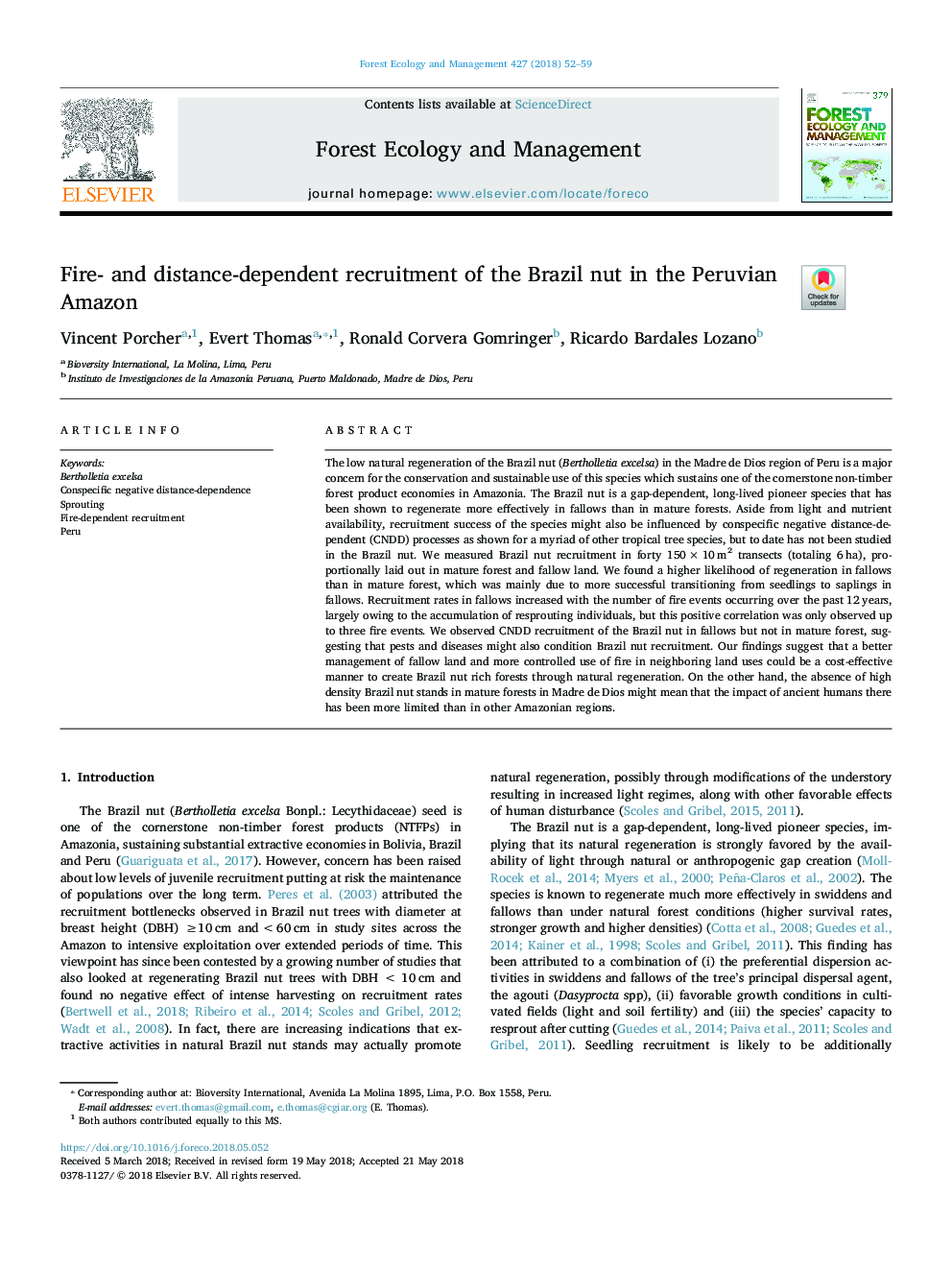| Article ID | Journal | Published Year | Pages | File Type |
|---|---|---|---|---|
| 6541493 | Forest Ecology and Management | 2018 | 8 Pages |
Abstract
The low natural regeneration of the Brazil nut (Bertholletia excelsa) in the Madre de Dios region of Peru is a major concern for the conservation and sustainable use of this species which sustains one of the cornerstone non-timber forest product economies in Amazonia. The Brazil nut is a gap-dependent, long-lived pioneer species that has been shown to regenerate more effectively in fallows than in mature forests. Aside from light and nutrient availability, recruitment success of the species might also be influenced by conspecific negative distance-dependent (CNDD) processes as shown for a myriad of other tropical tree species, but to date has not been studied in the Brazil nut. We measured Brazil nut recruitment in forty 150â¯Ãâ¯10â¯m2 transects (totaling 6â¯ha), proportionally laid out in mature forest and fallow land. We found a higher likelihood of regeneration in fallows than in mature forest, which was mainly due to more successful transitioning from seedlings to saplings in fallows. Recruitment rates in fallows increased with the number of fire events occurring over the past 12â¯years, largely owing to the accumulation of resprouting individuals, but this positive correlation was only observed up to three fire events. We observed CNDD recruitment of the Brazil nut in fallows but not in mature forest, suggesting that pests and diseases might also condition Brazil nut recruitment. Our findings suggest that a better management of fallow land and more controlled use of fire in neighboring land uses could be a cost-effective manner to create Brazil nut rich forests through natural regeneration. On the other hand, the absence of high density Brazil nut stands in mature forests in Madre de Dios might mean that the impact of ancient humans there has been more limited than in other Amazonian regions.
Keywords
Related Topics
Life Sciences
Agricultural and Biological Sciences
Ecology, Evolution, Behavior and Systematics
Authors
Vincent Porcher, Evert Thomas, Ronald Corvera Gomringer, Ricardo Bardales Lozano,
